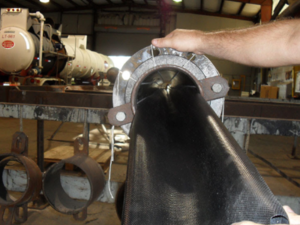The “Hard Boiled Hat”
| The History of the Hard Hat |
| Edward W. Bullard was a young lieutenant in the U.S. Army during WW I, witnessing the life saving benefits that the helmet provided his fellow soldiers. Flying debris, shrapnel and bullets might simply bounce off the “doughboy”.
Prior to the war, Edward had been working for his father’s company, E. D. Bullard Co., trying to create head gear that would protect miners in the San Francisco area from falling debris. Upon coming home, he again resumed his work and in 1919 he patented the “Hard Boiled Hat”, manufactured from heavy duck canvas, glue, leather and black paint – formed with “steam” to fit the human head. Hence, the Hard Boiled Hat! The very first major construction project that required hard hats was the construction of the Hoover Dam in 1931. In 1933, Chief Engineer Joseph Strauss mandated head protection for his project, the construction of the Golden Gate Bridge in San Francisco, fearing that falling hot rivets would injure workers below. In 1938, Bullard released the first aluminum hard hat, which was followed by the distinctive 3 rib, heat resistant fiberglass hard hat in the 40s and thermoplastic hard hats in the 50s and 60s. One major change occurred in 1982 when, pressed by one of Bullard’s major accounts, Bechtel, Bullard introduced a new hard hat that incorporated a non-slip ratchet suspension system inside the hat, with a knob in the back for sizing. This suspension system allowed the hat to be customized to fit the wearer’s head perfectly. Todays hard hats may be of different colors: yellow for laborers, white for supervisors, green for new workers and inspectors and blue for visitors! In addition, there may be sensors to predict and/or signal a fall, a thermometer to warn of heat stroke, cameras to judge progress and Bluetooth for communication. From the ruins of a terrible war came an idea that continues to save lives today. |
To learn more about who Dixie is, visit our About page.







Stay Connected